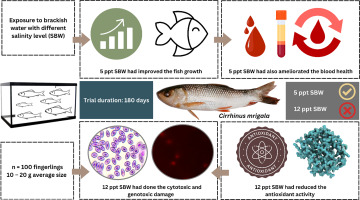
Title: Reaching 100: The True Factors of Longevity — And Why They’re Often Overlooked
Quote:
“You can reach the age of a hundred if you sacrifice everything that makes you wish to live to be a hundred.”
– Woody Allen
It’s a humorous statement, yet also deeply insightful. It highlights a conflict we all experience: the desire to have long, healthy lives contrasted with our hesitation to forgo life’s delightful indulgences. In today’s wellness culture, this conflict is sometimes misallocated to convenient scapegoats—chemical additives, GMOs, and anything deemed “unnatural.”
This is where influencers like “The Food Babe,” a well-known blogger with millions of followers, have established a distinctive presence. She has created a platform focused on exposing “what’s truly in your food,” cautioning audiences about the risks of GMOs and chemical components while advocating for “natural” substitutes. However, her popularity not only highlights genuine public concern for food safety and health but also showcases a concerning trend in contemporary health discussions: conflating simple fixes with effective solutions.
Let’s delve into this — and explore what it genuinely takes to live a long, healthy life.
The “Natural” Misconception
Much of the Food Babe’s messaging is built on fear: fear of chemicals, of GMOs, of anything not labeled “natural.” However, the term “natural” is largely devoid of meaning in food science. Few of our staple foods truly exist in the form that nature “intended.” Corn, wheat, tomatoes, and apples have all been selectively cultivated over centuries to improve size, flavor, color, and nutrition. Virtually nothing in our contemporary diet is “natural” if by that we mean untouched by human involvement.
Furthermore, “chemical” does not equate to “hazardous.” Everything we consume consists of chemicals, from the vitamin C in an orange to the caffeine in your coffee. Many additives criticized by wellness influencers (e.g., potassium sorbate or citric acid) are benign in the small quantities used in food—and in numerous instances, safe levels have been thoroughly vetted by regulatory organizations like the FDA and WHO. Vilifying these components contributes little to genuine public health, diverting attention from actual dietary concerns.
GMOs: A Distraction?
Genetically modified organisms (GMOs) are commonly targeted in specific wellness circles. Yet the scientific consensus is unequivocal: the GMOs available in the market today are safe for consumption and nutritionally comparable to their non-GMO counterparts. Organizations ranging from the American Medical Association to the National Academy of Sciences have confirmed their safety.
Critics often emphasize the “unnaturalness” of GMOs or link them to corporate farming. However, these arguments tend to focus more on ideology than nutritional science. Eliminating GMOs from your diet might feel like a healthy choice, but it does not guarantee improved health outcomes.
So What Is the Genuine Issue?
The actual challenge with modern health isn’t synthetic ingredients or genetic manipulation. It’s much more straightforward—and significantly tougher to address:
– The average American consumes excessive amounts of processed, calorie-rich food.
– We ingest too few vegetables, fruits, and whole grains.
– Physical activity has significantly decreased due to sedentary lifestyles and work settings.
Sound familiar? It should. These challenges have been underscored for years by organizations such as the American Heart Association and the American Cancer Society, which consistently recommend:
– A diet abundant in vegetables, fruits, whole grains, and plant-based proteins.
– Reduced intake of red meat and processed foods.
– Regular cardiovascular exercise to sustain healthy weight and organ functionality.
These recommendations do not discuss chemical additives or GMOs—because these simply aren’t the primary threats to public health.
Why Authentic Change Is Difficult
If we understand what enhances our health, why don’t we act on it?
1. Evolutionary Biology
Our brains are wired to pursue calorie-dense foods rich in sugar, fat, and salt. This was advantageous in prehistoric times when food was limited—yearning for energy-rich meals helped us survive. Nowadays, food is plentiful, yet those cravings endure, driving us toward unhealthy eating patterns that contradict long-term wellness.
2. Cultural Norms
Food represents social and emotional connections. It’s a means of celebration, comfort, and bonding with others. Regrettably, rich foods—not steamed broccoli—are frequently the central focus. That birthday cake or cheesy casserole symbolizes more than just sustenance; it embodies tradition, belonging, and affection.
3. Convenience and Expense
Creating well-balanced meals and allocating time for exercise demands time, effort, and sometimes finances that not everyone possesses. Fast food outlets, vending machines, and junk snacks are prevalent because they address the logistical challenges of modern life.
So Where Do Wellness Influencers Misstep?
Influencers like the Food Babe create a misleading sense of control: steer clear of this “toxic” ingredient or that “dangerous” food, and you’ll